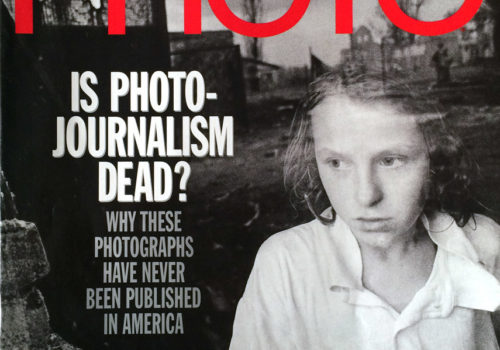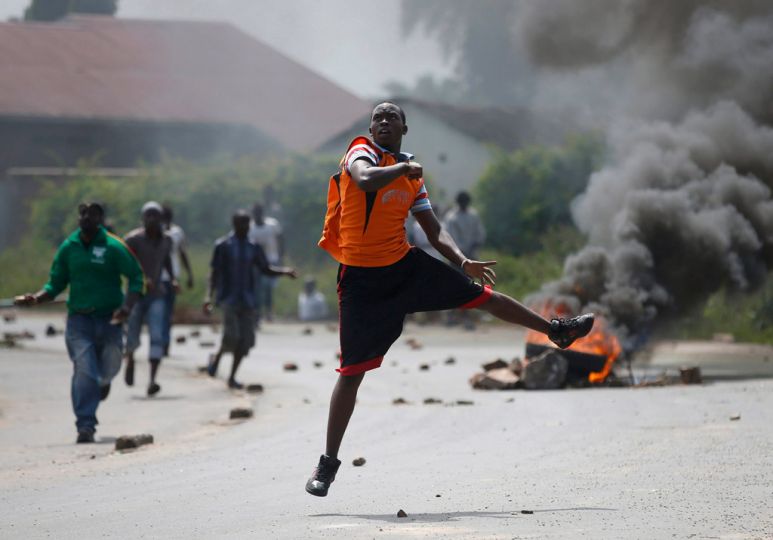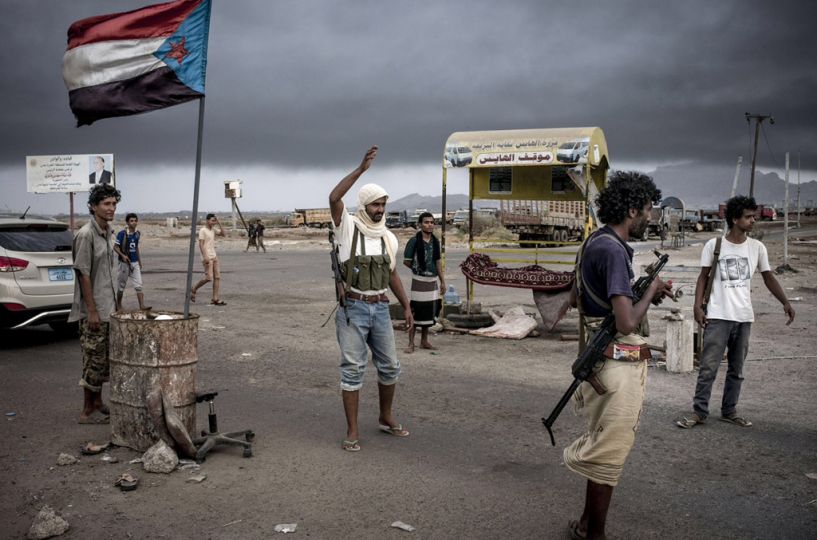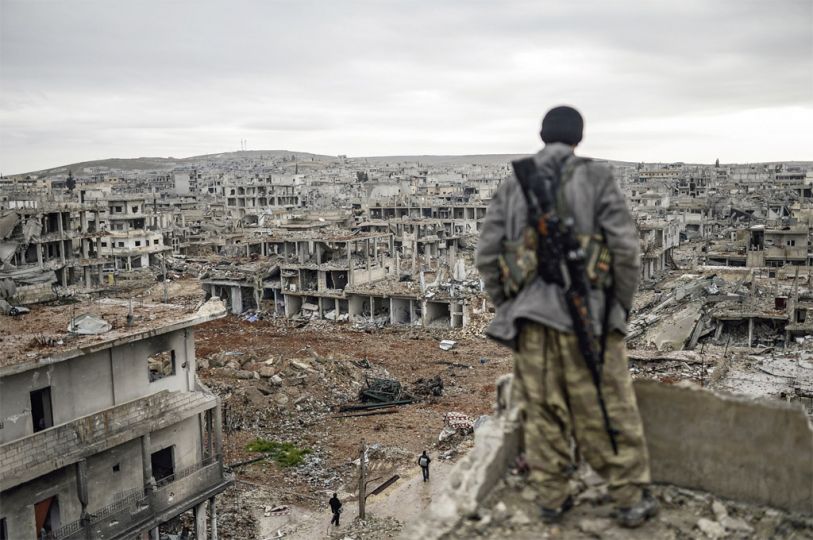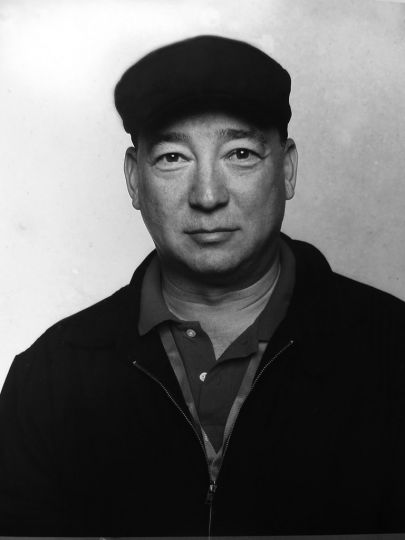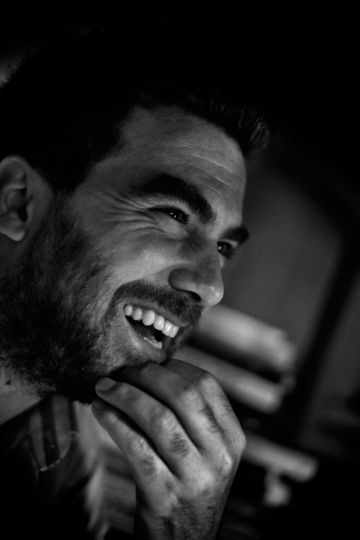19 years ago for the magazine American Photo, David Schonauer, Carol Squiers and I made a special issue for the 7th edition of Visa pour l’Image Perpignan called Is photojournalism dead ? We interviewed the 40 most important actors of the field then. Here are the texts. They are surprising, excepted 2 or 3 of them, no one imagined the tsunami photojournalism was going to live !
Is photojournalism dead ?
http://www.AmericanPhotoMag.com
MIKE SMITH
Director of Photography The Detroit Free Press, Detroit
We’ve all gone overboard in predicting our own demise. The one thing that has not changed over time is the power of the still image to stop people, to make them think. There will be a healthy future if photojournalists are willing to be creative about marketing their work. We can publish ourselves. We can start partnerships with people we once thought were our competition, like television stations. We can get involved with other institutions, like art museums. We can explore the new media. If we can’t think broadly, then we will be in trouble.
DONNA FERRATO
Photographer, New York
Photographers tend to get so morose about the future, but we’ve had some good seasons. We’re going through a drought, just like they are out in Oklahoma. But the rains will fall again and people will see they can’t live without us. Our photographs are the ones that stay in people’s minds, opening eyes to hard truths. That’s why I’ll continue as a photojournalist.
ROBERT PLEDGE
Owner, Contact Press Images, Paris and New York
In its present form photojournalism probably doesn’t serve much of a purpose anymore, however rough that might sound. During the 60 years from Erich Salomon to the Gulf War, its privileged function was to visually inform the public in a meaningful way. But in this day and age television serves that purpose, sometimes very well. No doubt a small number of individuals will continue working in the tradition of photojournalism successfully. But for them, books and exhibitions will be the vehicles for their projects; they will be long-term efforts, often funded by grants, and will bring us an understanding of the world that is different from-and complementary to-what we see on TV.
LUC DELAHAYE
Photographer, Magnum, Paris
Photography has a minor role in the media nowadays. Television, with its ability to reach the masses in real time, is the leader . Most photographers are operators whose version of reality must stick to the version on television- the official version. This visual standardization is increased by technology. The fast transmission of pictures is not a plus anymore; it is necessary for survival. Conferences, festivals, museum exhibitions, new grants and prizes all prove that photojournalism is in a process of institutionalization. Although photojournalism has lost its audience and role in public life, it has gained prestige. It ‘s becoming a cultural object, sometimes superfluous and often self-absorbed. And the fact that photojournalism is obsessed with its future is the· first symptom; if it was really alive, living would be enough and there would be no need to talk about it.
MARK GODFREY
Photography Director, U.S. News & World Report, Washington, D.C.
I think there is very little photojournalism currently being done in the U.S. or anyplace. The pictures are illustrative of the text., but it not what I think of as photojournalism; it’s visual wallpaper. My basic concern is the diminishing craft in photography. Technology has not helped photojournalists, who rely too much on things like autofocus, the zoom lens, and the wide use of color. These things get in the way of seeing, and people are nor doing committed journalism. I’m not sure that what people want anymore is photojournalism. It’s becoming a form that has very little impact on the public, rather than a useful communications tool. You don’t hear about people holding a picture up in Congress and demanding that something be done. People are just not affected.
KEN LIGHT
Documentary Photographer, Berkeley, California
It’s easy to say things were better in the old days, when photographers could get regular jobs at magazines like Life. I mean, it sounds pretty bleak to say that photographers now have to dream up their own projects and self-finance them. But there is a positive side: You work on what interests you, and you’re able to hold the copyright on what you create- something the old magazine photographers couldn’t do. I’ve got a lively market for my older work, which I can keep reselling to collectors and magazines. Also , there are many ways to market now- from galleries to online news services. The key is holding the copyright.
CORNELL CAPA
Director Emeritus, International Center of Photography, New York
Today my crystal ball is a little cloudy. But I can see that this is a time of fantastic changes . Photojournalism is alive, but not in customary ways. There are only two really good outlets for the old fashioned picture essay- National Geographic and Geo in Europe. And the old idea of photographers chasing around the world’s hot spots is not viable. It’s too difficult to be different from other media. But books and exhibitions-that’s a wide-open field. And so is new technology.
OMAR BADSHA
Photographer, IKAPA Arts Trust, Cape Town, South Africa
When you look at the majority of people in the world, the literacy level is still so low that photojournalism- the use of photography to put across ideas- continues to have a major role. But at the same time, the ability of people to get, and respond to, information has been so highly developed that we cannot grasp the revolutionary nature of the change taking place. The use of photos and stories on the Internet has enormous potential. In our city, for example, we have about 100 schools, namely white, middle-class schools, that are already connected to the Internet. Every child has his or her own online address. But then, about five minutes away, there are children in schools without electricity. This reflects the kind of huge social difference that exists in many parts of the world.
There will always be a need for quality journalism and publications that allow for critical evaluation of society-especially in countries like ours, where the disparity in income and in gender equality is so sharp. We must all find ways to get across information, ways to engage in critical evaluation. We have no other option but to use photojournalism in any way we can.
SUSAN MEISELAS
Photographer, New York
I’m pessimistic about how the new media will support in-depth work in some serious fashion. I don’t see the multimedia world looking to photographers to be the tellers of tales. They are looking for stock, and consider us content providers, which I find particularly insulting. Independent photographers will struggle, as always-not only about how to produce, but also about where to have impact with their work. We have to look for ways to open up the doors, not just make up the images.
HENING HANSEN
Editor, Katalog: Quarterly Magazine for Photography, Frederiksberg, Denmark
The more interesting question than whether photojournalism has a future-I think it does-is what it’s going to look like. In the long run the Internet and electronic media will be important, even though they’re not yet. Large companies like Microsoft and Walt Disney will play a big part, and we need to know. whether they are going to open things up to everyone or whether they’ll just come in, commercialize the Net, and narrow its functions. The future of photojournalism is more a discussion of media infrastructure than of photographers and genres.
LARRY ARMSTRONG
Director of Photography, l.os Angeles Times, Los Angeles
I actually find that the new technology is making this an exciting time for photojournalism. Young photographers coming out of school today are not tied to the past, not thinking about the good old days. They recognize the potential of what’s coming-that their skills can apply to video, to sound technology. I once said that the anthropological definition of a photojournalist is hunter and gatherer. And that’s still there-the imagery is still there-but how the information is presented will change and have more depth. In order to do their job, photojournalists of the future are going to have to be aware of motion and sound. They’ll need to be able to bring back elements of dialogue, for instance, or the sound of gunfire, in addition to the imagery. And the savviest photojournalists will be able to network. They will know a great designer and a great researcher and be able to put together al electronic package-for CD-ROM, TV, the Internet. Packaging and teamwork will have more significance.
SEBASTIAO SALGADO
Photographer, Paris
As long as there’s journalism, there will be photojournalism. They’re two halves of a whole. And although they certainly won’t last forever, for the moment I don’t see either one of them coming to an end. Roland Barthes, in his book Camera Lucida, stated that photography, rather than film or television, is the collective memory of the world. As I see it, he’s right about this. Photography immortalizes a moment, which then becomes a symbol, a reference. Photography is a universal language; it doesn’t need translation. Its collective memory is a mirror in which our society continually observes itself.
When many of the great magazines disappeared, we assumed that this phenomenon implied the disappearance of photojournalism as well. In reality, the introduction of hundreds of new formats such as weekly newspaper supplements, regional magazines, publications from humanitarian and other organizations, as well as the advent of multimedia, demonstrates the extensive applications of photojournalism. This widespread diversification makes the continuity of photojournalism possible.
HARRY BENSON
Photographer, New York
Photojournalism is the worst it’s ever been. Nobody is doing anything. Today all the photographers are making setup shots, where you go in to shoot someone with a couple of assistants and a few stylists. Everyone does it. I do it. It’s the ValueJet of photojournalism-stuck in the mud. In the end, those kinds of portraits mean nothing. They don’t convey any information. The idea in that kind of photography is to make a picture the subject will like. That’s not journalism.
RICH CLARKSON
Owner, Rich Clarkson and Associates, Denver
You can’t talk about photojoumalism without talking about newspapers, by far the largest users of photojournalism in this country. About ten years ago? in response to USA Today and its trendy graphics, newspapers began hiring photographers. Consequently, there are far more photojournalists at work than there were 20 years ago. In terms of classic documentary-style, concerned photojournalism, there isn’t much getting published; but that doesn’t mean there isn’t a place for it. There is-in the art world. Museum and gallery audiences are still thrilled by this work. But photojournalists, like other people in the art world, have to grope to find those audiences. They have to self-assign and produce private work they believe in.
TOM KENNEDY
Senior Assistant Editor for Photography’ National Geographic, Washington, D.G.
The problem with photojournalism is magazines, which I fault for their lack of commitment to people who are making photography. There is a lack of economic support. And there is a lack of imagination in how photos are used. Photographers need to get out from under the yoke of the editorial system,or use other forms, the way Gilles Peress did with his book and exhibition on Bosnia. They need to think about the possibilities offered by new online technology. But the Internet is not yet the total answer ,the economics, at least from the perspective of a photographer setting up a Website, are a big question.
ROBERT KIRSCHENBAUM
President, Pacific Press Service, Tokyo
In Japan you get a different perspective than in Europe or the U.S. But the market for photography is nonetheless global in nature a market in which photojournalism is more and more being displaced by gossip and personality stories. The key for us is to package big photojournalism projects in various media that feed off each other; we’ll set up an exhibition of someone’s work, which might lead to a book. The book in turn will get magazines interested. In Japan we’re lucky, because there are big exhibition spaces in the department stores, and they’ll pay for material.
EUGENE RICHARDS
Photographer, Brooklyn, New York
We are entering a historic time when people are getting more conservative, and overloaded. I’m inclined to think that photojournalism is beginning to show its limitations. There are great single pictures that tell a story, but the public is getting so used to voice and sound and music that as a practical matter perhaps we are justifiably fading. The assignments are shorter, and the magazines aren’t paying any longer. We all work hard, but we have to face up to the constraints and work harder. What is becoming more obsolete for photographers is this thing called reporting. We’ve become illustrators; we go out looking for pictures to illustrate the known. You find that you leave things out because you’re supposed to make a story a tragedy. I don’t think that we are breaking new ground.
MARCEL SABA
Director, SABA, New York
When I started a new picture agency seven years ago, people said I was crazy. They said photojournalism was dead. But it wasn’t, and it still isn’t. Are there “fewer outlets for photojournalism now? Yes, especially in America. But it’s also true that very often the work that remains unpublished is just not good enough.
KERRY TREMAIN
Creative Director, Mother Jones, San Francisco
Documentary photography and photojournalism have two principal values in common: the human condition and the idea of experience-based discovery. Since the mid-1970s, both of those values have been in retreat in this culture. Through the leveling ethos of the Web- the idea of many voices speaking rather than voices being edited- there is some seeking of common ground. But ultimately, our experiences of the world, our mortality, our history, and our ideals- not the electronic ether- are our real common ground.
ANTHONY SUAU
Photographer, New York
Photojournalists are struggling tremendously. The people who know photojournalism, the photo editors, have had to relinquish their power to the word people. There is a certain lack of respect between the word and photo people, and this will always be a battle. Globally, magazines are moving away from producing work. American magazines lean toward classical photography that literally dates back ten or 20 years in its form, so there isn’t a lot of room for innovative photography there . In Europe, it’s almost impossible to find a magazine to pay for the production of a story. I think there will be a lot of people who don’t survive the next five or ten years in the business.
GRAZIA NERI
Owner, Grazia Neri agency, Milan
I don’t think photojournalism will die, but I’m sure it will change dramatically. Photojournalists who want to be concerned witnesses of our time must have inventive power. They must be interdisciplinary., must consider new markets and accept new technologies [that improve] their work and marketing capacity. They must be aware of all their potential and at the same time fight for copyright control. Copyright control is the only way to save photojournalism, and photographers, agencies, and picture editors must fight together.
BEN CHAPNICK
President, Black Star photo agency, New York
The problem many photojournalists are having is not with the market, but the form: The American editorial market is the biggest in the world, but the American photojournalism market is one of the smallest. Newsweeklies need event photojournalism, not documentary work. That doesn’t mean there’s no room for that kind of work- it’s my feeling that photojournalism of all kinds is in fact more important today than ever before. People today have a greater sensitivity and appreciation of visual imagery.
DAVID FRIEND
Director of Photography and New Media, Life, New York
CNN, MTV, and the Mac were born ten years ago. Ever since, our capacity to absorb and tolerate visual information has expanded exponentially. One could argue that even though we’ve become more graphically astute as a culture., we are collectively afflicted with a sort of image fatigue that tends to dilute the potency of individual pictures. I believe that the photograph, especially the photojournalistic image, has acquired more power today, not less. In this age of the great electronic blur, it is imperative that we seek solace in the eloquent silence and permanence of the still photograph. A still photograph forces us to be still. It compels us to consider an observed moment and, in turn, to feel it, to react, to reflect–or to take action. In its own stubborn, point-blank manner, great photojournalism conveys something resembling tangible truth. Unlike any other medium, it says concisely and directly: Stop, damn it, and witness what I have witnessed.
VOLKER HINZ
Photographer, Stem, Hamburg, Germany
I don’t worry about how people will see pictures-magazines or the Internet. In the long run the black-and-white negative will survive. It will survive because of the creativity of photojournalists-their personal point of view.
MICHEL BERNARD
President, Liaison Agency/Gamma Liaison, New York
If we measure success in terms of exposure, photojournalism has a tremendous future. Before we were limited. Now there ‘s television, the Internet, and a greater number of magazines and newspapers. But this means a deep change in the way agencies and photographers work, perhaps a restructuring of our industry. Five years from now, if there are 20 times more people on the Internet than reading a magazine, we will have to be there. But no matter what the medium, people are always hungry for strong pictures, and we will continue to need great photojournalists to record history.
TOM GRALISH
Staff Photographer, The Philadelphia Inquirer, Philadelphia
There are enough people who feel the need to express the things they are seeing for photojournalism to survive. Whether it’s self-publishing or working for nothing, we will adapt, as we have in the past. But people don’t buy newspapers to look at the pictures, so photography is becoming more or less advertising to catch the eye and make you want to read the story.
REGINA ANZENBERGER
Director, Anzenberger Agentur Für Fotografen, Vienna
Despite much pessimism, I don’t think photojournalism is dead. Through digital photography, there will be an increasing demand for classic chemical photography. Photography will be closer to the art world, which you can see today if you follow the prices for photos at auctions. But the most important issue for photojournalists will be to find their own visual language much more so than in the past.
CHRISTIANE BREUSTEDT
Editor in Chief, Geo Saison, Hamburg
In the tidal wave of pictures, the serious photographer is an endangered species. A good photojournalist creates a mystery or an optical illusion based on the real world. Do we need this kind of photographer? I’m afraid not. A few will survive as the masters of photography, and the others will become the worker bees-supplying the basic material to be plastered on magazine pages or to play around with on the screen.
JEAN-CLAUDE COUTAUSSE
Photographer, Contact Press lmages, Paris
I’m worried about financing photojournalism. No magazine actually has enough money to send us for a reasonable stay at any event. I was sent for three days to Budapest to take pictures of the Hungarian mafia; three days is not enough. This is not going to change-maybe the only future is in institutions as sponsors. I can’t be a pessimist- I don’t have the right to be. It’s our survival we are talking about.
JON JONES
Photographer Sygma, London
The advent of new technology is a threat; people can move pictures quicker, and that cheapens it so it become almost like fast food. Three years ago, you could get funding and get published. Now if you come up with an idea, where are you going to put it? A lot of magazines are owned by shareholders. They have a profit to make, advertisers must be appeased, and magazines are less willing to take a risk. So what do you do? You can’t just shoot banal photos because the advertisers like them. Someone must have the courage to run them, and less and less people are willing to do that.
BILL KUYIKENDALL
Director, Pictures of the Year, Missouri School of Journalism, Columbia, Missouri
The developments in photojournalism are running at cross-purposes. There is an increasing demand-for-good photography, while staff sizes shrink. Photojournalists are shooting. scanning, and participating in the layout process, increasing the amount of desk time in proportion to street time. Editors move around and never come to understand the community very well, decreasing the individuality of newspapers. The fortunes of photojournalists rise and fall with leadership. investments, attitudes toward aesthetics and competition, but inevitably keep coming back to the editor who thinks for himself and decides to invest in a quality product. You’ve got to have people who believe in something, do it well, and do it consistently. If you have that, I think the profession is sound.
DENNIS COPELAND
Director of Photography, The Miami Herald, Miami
We have to look at the times and recognize the niche markets resulting from a diverse culture. We should see this as a warning that different types of people in the community read different things. The important part is to become a key into their lives. We must learn to do that in order to survive.
ELIANE LAFFONT
President, Sygma U.S.A., New York
It’s harder to cover Bosnia. Chechnya and Liberia when “important” newsmagazines print cover stories such as “Aliens Have Landed!” (Time, July 8) and “Out There: From Independence Day to The X-Files” (Newsweek, July 8). But at the Sygma agency we’re still optimistic. I believe this triviality is a ’90s trend, and that it is temporary.
COLIN JAGCOBSON
Lecturer in photojournalism, Cardiff University, Cardiff, Wales
The idea that photojournalists can compete with TV in terms of straightforward news gathering is absurd. But instead of feeling depressed about this, photographers should see it as liberating. They no longer have to chase fire engines, in the global sense. They will still go to the troubled places of the world, but with a much more interpretive approach. They should be able to go into a situation with a lot of background research and reveal its essence. This is much more interesting and creative, anyway.
FRANCOIS LOCHON
Sharehotder, Gamma, Paris
The future of photojournalism? What future? Photojournalism is nearly dead. The few rare photographer who can lay claim today to the title of “great reporter” are on the verge of extinction. The exchange of visual information on our planet has exploded. The overabundance of photos on the market has eliminated the need for craftsmen of the 35mm SLR, who used to jump on a plane to photograph a moment at the other end of the world. At some point in the near future, newspapers and magazines may become interested in photojournalism once again, but today, and particularly in France, the veritable journalists of the image are having a hard time.
JAMES NACHTWEY
Photographer, New York
I believe there’s still a need for still images. They serve a unique function that can’t be replaced by video, humanizing situations that would otherwise remain abstract. They give voice to those who wouldn’t otherwise have a voice, and also provide a record of history as seen from street level, not from on high. In that way photojournalism becomes our memory.
PETER GALASSI
Chief Curator, Department of Photography, Museum of Modern Art, New York
My prejudice is in favor of the photojournalist’s unfettered exploration of his or her chosen subject and is thus opposed to the tendency of agencies and editors to limit, suppress, or bowdlerize that exploration. As in American politics, the fault for this tendency may lie not so much with the delivery mechanism as with the audience, which demands to be told comforting, predictable lies and rejects any other communication. For me, then, the question of the future of photojournalism is whether the business will widen opportunities for the individual photographer of independent outlook. It is conceivable that, by multiplying and accelerating paths of delivery, the new digital technologies will have that effect, though nothing about the new technologies is certain, including the notion that they will dissolve photography’s capacity to respond directly and imaginatively to the world outside the computer.
DIETER STEINER
Bureau Chief, Stern, New York
A photojournalist who doesn’t believe in the future of his trade should mothball his cameras. Photojournalism is not dead-it is alive and kicking. True, there are fewer magazines devoting double pages to strong photojournalism, but on the other hand, there are quite a few newspapers in this country that take pride in the visual presentation of their Sunday magazine supplements. And there is more awareness of photographic quality. Work reflecting the handwriting of an individual photographer is still sought after.
ROGER THEROND
Editorial Director, Hachette Filipacchi Press, Paris
As long as there are men and women and children, and the desire to fix their existence, full of joy and misery, in images … as long as this strange adventure of small , gesturing human beings lasts on this blue planet, the earth, somewhere on the edge of the galaxy among billions of worlds … as long as we don’t see eye to eye and our hearts and minds are free to express themselves … as long as there are forests, paper, newspapers, magazines, posters, books … as long as there are screens and projected images … as long as there is the desire to know, to taste, to love the beautiful and the ugly, the astonishing and the inane, the virtuous and the morbid .. . as long as there is the desire to tell stories and the thirst to see … as long as our lives , and those of our children, grandchildren, and great-grandchildren last… as long as history lasts… photojournalism will live.
GOKSIN SIPAHIOGLU
Owner, Sipa, Paris
Although photojournalism in general continues to prosper, hard-news pictures have become less salable. In the 1980s, Paris Match printed an exclusive cover photo of Lech Walesa, then head of the Solidarity movement, languishing in prison. It was a sensational photo, but it sold few copies. Match found that it could do far better with cover pictures of Princess Diana or Claudia Schiffer. By the same token, Luc Delahaye took a memorable picture of an infant rescued from the Tuzla fighting in Bosnia, its face covered with blood. This gripping picture made the cover of Newsweek-and it was one of Newsweek’s poorest-selling issues of all time. Perhaps unfortunately, great news photos enhance reputation but do nothing for circulation. But Time and Newsweek are still in business, and Life has made a comeback. Paris Match, Stern, Focus, and scores of other picture magazines flourish-as do daily newspapers everywhere, as do soft- and hard-cover books. The future of photojouralism? The best is yet to come.

